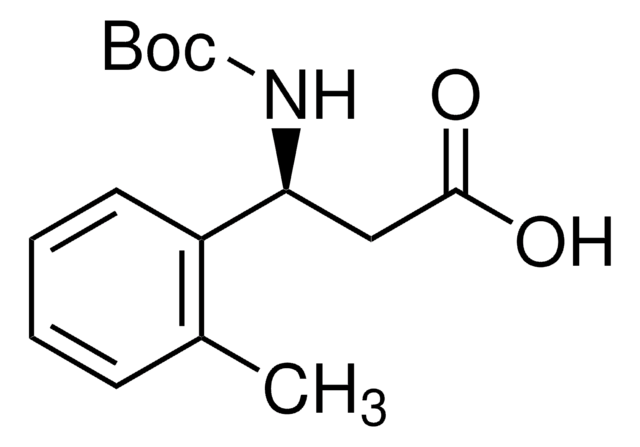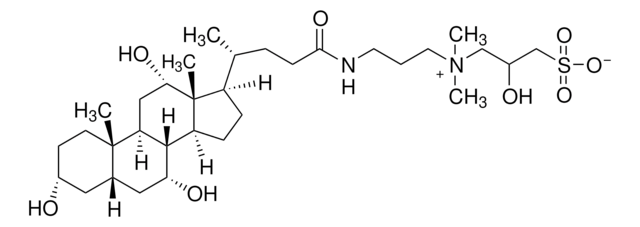19899
CHAPS 100 mM solution
Synonym(s):
CHAPS solution
About This Item
Recommended Products
description
zwitterionic
form
liquid
mol wt
614.88 g/mol
concentration
100 mM in H2O
technique(s)
protein quantification: suitable
CMC
8 mM
transition temp
cloud point >100 °C
density
1.01 g/mL at 20 °C
storage temp.
2-8°C
SMILES string
C[C@H](CCC(=O)NCCC[N+](C)(C)CCCS([O-])(=O)=O)[C@H]1CC[C@H]2[C@@H]3[C@H](O)CC4C[C@H](O)CC[C@]4(C)[C@H]3C[C@H](O)[C@]12C
InChI
1S/C32H58N2O7S/c1-21(8-11-29(38)33-14-6-15-34(4,5)16-7-17-42(39,40)41)24-9-10-25-30-26(20-28(37)32(24,25)3)31(2)13-12-23(35)18-22(31)19-27(30)36/h21-28,30,35-37H,6-20H2,1-5H3,(H-,33,38,39,40,41)/t21-,22?,23-,24-,25+,26+,27-,28+,30+,31+,32-/m1/s1
InChI key
UMCMPZBLKLEWAF-RFCNGIAKSA-N
Related Categories
General description
Application
Biochem/physiol Actions
Storage Class Code
12 - Non Combustible Liquids
WGK
WGK 3
Flash Point(F)
Not applicable
Flash Point(C)
Not applicable
Personal Protective Equipment
Choose from one of the most recent versions:
Already Own This Product?
Find documentation for the products that you have recently purchased in the Document Library.
Customers Also Viewed
Our team of scientists has experience in all areas of research including Life Science, Material Science, Chemical Synthesis, Chromatography, Analytical and many others.
Contact Technical Service







